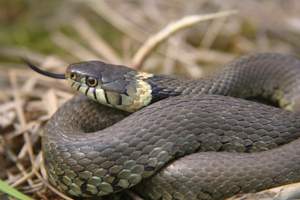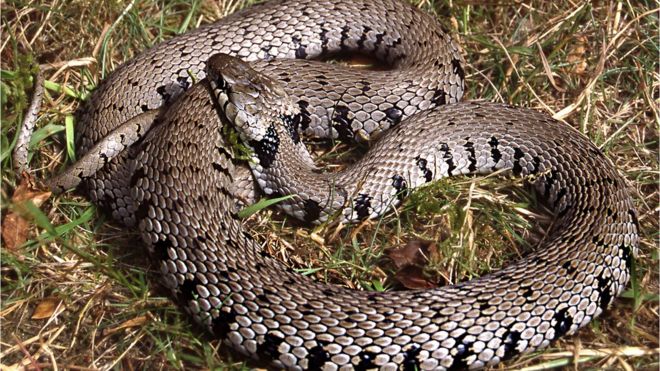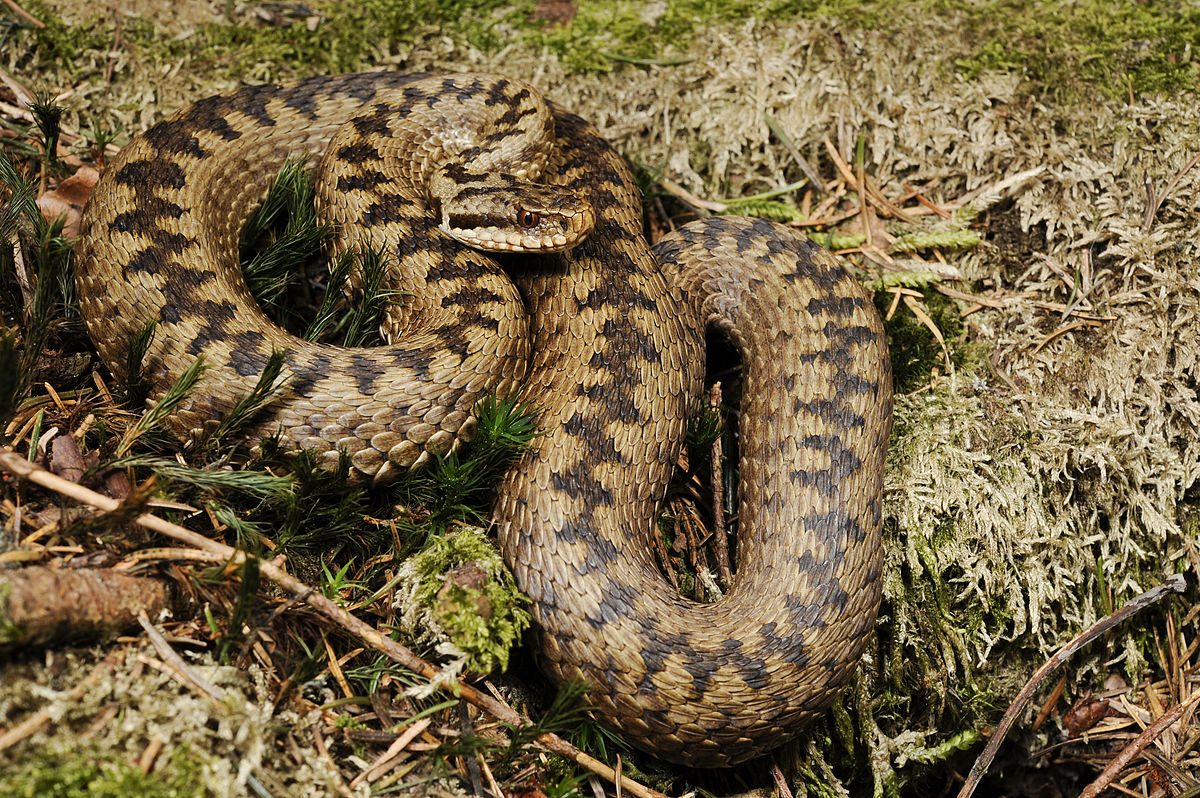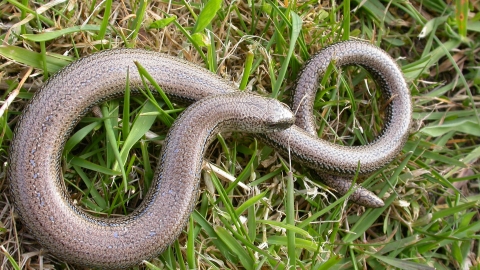
Tigger Investigates... Snakes in the UK
There are four types of snakes native to the UK. Three of them are non venomous.
Common Grass snakes are brown, dark green, grey or black in colour with a yellow collar behind their head.
Usually reaching about 100cm in length. They also get called water snakes as they are often near water where they feed on newts, toads and frogs. They sometimes eat fish and other lizards too.
They can normally be found in the south of England and in central Wales.
Common Grass Snake
Smooth snakes are grey, brown or a reddish colour with two rows of spots running down their back. Usually reaching about 60 to 75cm in length. They tend to eat small mammals, lizards and smaller snakes.
They can normally be found in the south east and west regions of England.
Smooth Snake
Barred Grass Snakes are more greyish in colour and have dark bands on their body. Usually reaching about 100 cm in length. They tend to eat frogs, toads and newts.
They can normally be found throughout the UK.
Barred Grass Snake
Adders are the only venomous snakes that are native to the UK. They are white, grey or light brown with a zigzag pattern down their bodies. There are some that are black, although these are rarer. Usually reaching 60 to 70 cm in length. Adders feed on frogs, rodents newts and lizards.
They can normally be found throughout the UK.
Adder
Even though adders are venomous they are not naturally aggressive. They will usually try to escape before using their venom.
Most recorded bites are due to the snake being cornered, startled, accidentally trodden on or even picked up!!
I will also mention the Slow Worm which is also called the deaf adder.
This is not a snake at all, it is in fact a legless lizard.
So why am I mentioning it?
This is probably most mistaken for an actual snake. It has a smooth golden grey skin with either blue spots or a dark stripe down it’s back.
Usually reaching about 40 to 50 cm in length, living up to 50 years. They tend to eat slugs, snails, worms, insects and spiders.
They are found throughout the UK.
Slow Worm
The biggest difference for slow worms are that they have eyelids and they can make their tail drop off when escaping from danger, like most lizards.
Now before you go on a misguided hunt for snakes and slow worms, you need to know that all of these species are protected by law and you must not harm them in any way.
Dangers
The danger to humans and animals from these snakes (and lizard) vary.
The slow worm poses no threat whatsoever.
The Common, Smooth and Barred Grass snakes can bite, which is painful and may have some infection risk.
The Adder has the real risk as they produce venom. Any instance of an adder bite will require medical treatment.
Signs of a snake bite.
Signs of a bite are not always evident. Especially in animals as our fur may hide the swelling or bite marks.
There may be other signs, such as, pale gums, bruising, drooling, vomiting, diarrhoea, dehydration, restlessness, drowsiness and lethargy.
What to do if you suspect a snake bite.
1. Contact your vet as soon as possible, remembering to tell them your location as they may direct you to a closer vet.
If you are on holiday contact a local vet.
2. Forget what you have seen on movies. Do not wrap a tourniquet or try to suck out the poison. Instead what you need to do is bathe the wound with cold water to reduce the swelling.
3. Do not let the patient walk as walking will increase the spread of venom around the body. This may not be possible if the animal is very large or heavy.
While travelling to the vet make sure the patient is kept warm and quiet.
Recovery
Even though it may look really bad and is stressful to both the dog and human, recovery from an adder bite has a 96-97% survival rate.
The recovery time varies in all cases and depends on the circumstances. Such as health of the dog, time the bite was noticed, time from bite to arrival at a vet.
Treatment can be anything from 24 hours to 30 days depending on the individual circumstances above and the severity of the bite and amount of venom injected.
Be prepared
For anyone that does not live in the UK, it would be a good idea to find out what snakes (and other poisonous critters) live in your area/country.
Find out what veterinary treatments and procedures are in place for any emergency.
If you are on holiday, you should have already been given contact details of a local vet by the place you are staying. If you haven't then remember to ask.
It is better to have the number and not need it.
I know the chances of being bitten is very low, but it is better to know beforehand rather that trying to find out during an emergency.
Stay safe out there pals.



